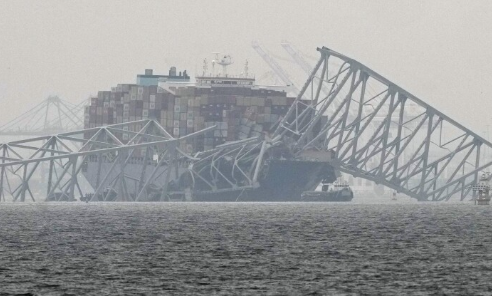Unexpectedly, a major bridge in Baltimore collapsed after colliding with a cargo ship, sending shockwaves through the supply chain and leaving businesses frantically trying to minimize the damage to their bottom lines. The incident has raised questions about the short- and long-term effects on employment, the distribution of cargo, and the overall economy. It also resulted in the stoppage of vessel activity at the Port of Baltimore.
The Immediate Aftermath and the Rush to Adapt
Following its shutdown on Tuesday, the nation’s main vehicle-handling port has encountered before unseen difficulties. Pete Buttigieg, the secretary of transportation for the United States, emphasized the importance of Baltimore to the nation’s logistics network and the pressing need for ocean shippers, other ports, and cargo owners to find alternate routes for the diverted ships. Maryland Governor Wes Moore noted that the suspension might have indirect effects on nearly 140,000 individuals in addition to the direct effects on the port workers. This significant economic impact emphasizes how crucial it is to overcome the logistical obstacles caused by the collapse of the bridge as soon as possible.
Diverting the Tide: The Role of Alternative Ports
Analysts have identified the Port of New York and New Jersey as the main benefactor of the redirected cargo trade in light of the continued interruption. This port is strategically positioned and has the capacity to manage the increased load, even with the logistical challenges of rerouting. The port’s director, Bethann Rooney, told interested parties that aggressive steps were being taken to guarantee supply chain continuity throughout the East Coast. Though he is still upbeat about the overall macroeconomic impact, Oxford Economics analyst Ryan Sweet issues a warning of “noticeable headaches” in the upcoming months and suggests that the presence of other major ports may be able to lessen the severity of supply chain disruptions.
Sector-Specific Impact: The Auto Industry in Focus
Among the industries most impacted by the catastrophe is the car business, in particular. The stakes are high for auto makers and allied firms since the Baltimore port handled over 840,000 cars and light trucks in the previous year. The logistics platform Container xChange has expressed worries over possible inventory shortages and increased shipping costs, which exacerbates the difficulties experienced by businesses such as Mazda and Stellantis. In order to maintain the uninterrupted flow of trucks and reduce operational disturbances, these companies are now compelled to think of alternate logistical tactics.
Notwithstanding the concerns over the collapse of the bridge and the subsequent impact on the supply chain and certain industries, the joint reaction of enterprises, ports, and government representatives demonstrates a flexible and robust economic environment. The strategic rearrangement of logistical operations and the coordinated efforts across the board seek to steer the economy clear of a serious downturn, even though the road to recovery may be filled with “noticeable headaches.” As the crisis develops, the affected sectors’ capacity to adjust and be resourceful will be essential for overcoming the difficulties that lie ahead, guaranteeing that the flow of commodities is not disrupted, and maintaining economic stability.



